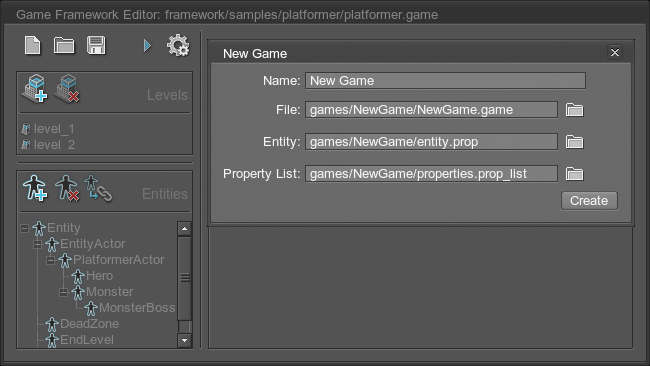Overview
A Game Framework is a high-level system written in UnigineScript created for quick game development. It provides fast and handy interaction between 3 fundamental game logic concepts: Game, Level and Entity.

Technically, framework executes the following operations:
- Associates Unigine nodes with Entities
- Associates Unigine worlds with Levels
- Initializes the Entity parameters with the Property file
- Manages the objects for Entities
- Provides global game context across all Levels
- Executes the periodic call of the function and its automatic time spreading over several frames (required for logic optimization)
- Provides an event handling system
- Updates Entities in the most optimal way
Game Framework also includes a Game Framework Editor plugin, which can be helpful to:
- Manage Game, Levels, Entities
- Attach Entities to Unigine nodes and place them in the world (by a simple drag&drop operation)
- Build the inheritance hierarchy for Entities
- Generate Property files for Entities
- Launch the Game quickly
To Start with Game Framework
Before starting to work with Game Framework, make sure that you are aware of the following Unigine engine sections:
- UnigineScript basics and principles of object-oriented programming
- System, World and Editor scripts
- Structure of the world and corresponding *.world and *.cpp files
- Nodes and their hierarchy
- Node references
- Unigine Properties and their inheritance principles
Last update: 03.07.2017
Помогите сделать статью лучше
Была ли эта статья полезной?
(или выберите слово/фразу и нажмите Ctrl+Enter